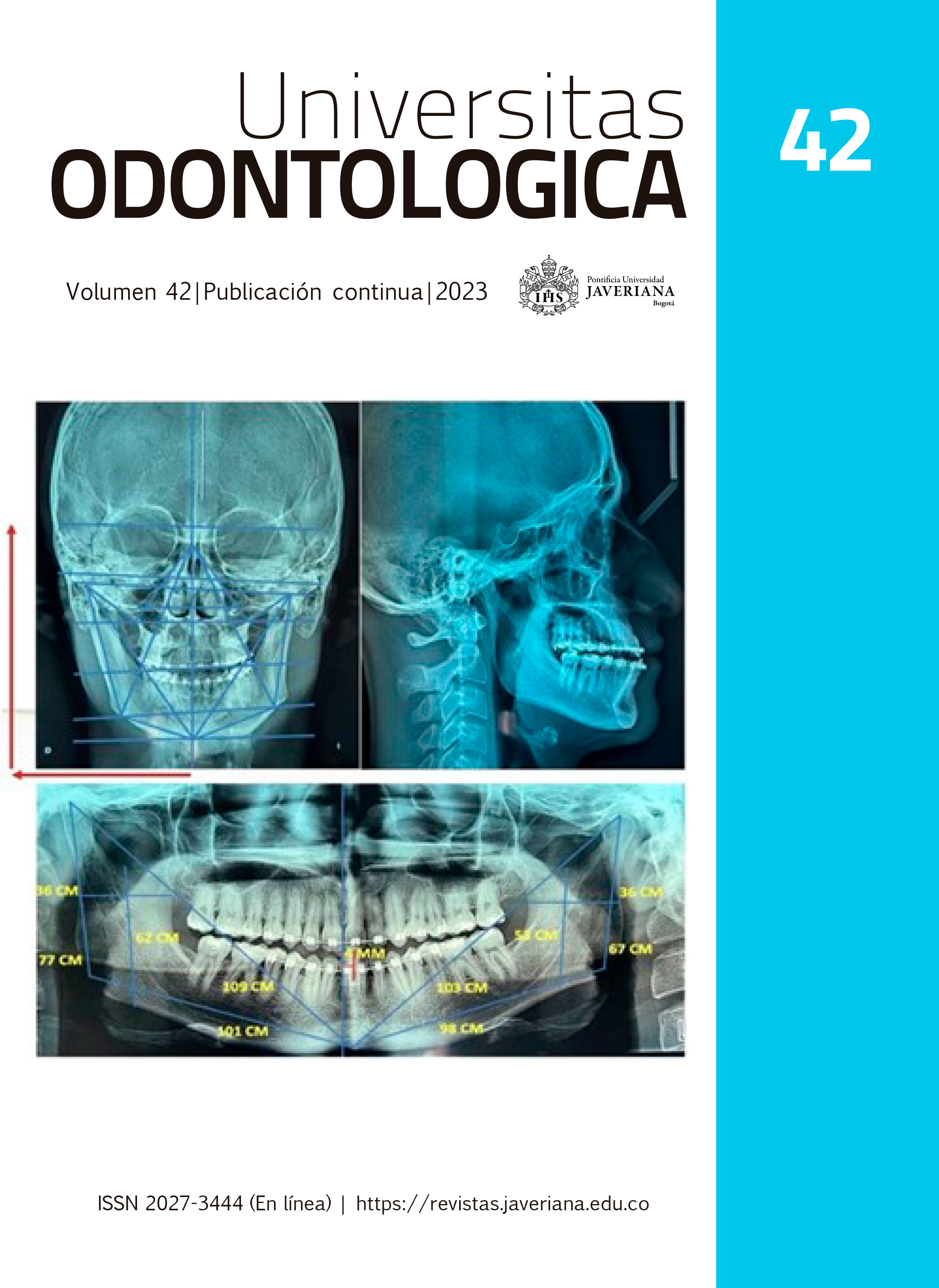Abstract
Background: academic training processes during the COVID-19 pandemic were supported by information technologies. However, the conditions of the setting where synchronous meetings take place as well as the disposition of the students can influence the appearance of musculoskeletal disorders. Purpose: to identify factors associated with musculoskeletal disorders in dental students from northeastern Colombia who received virtual classes mediated by information technologies during the COVID-19 pandemic. Methods: cross-sectional analytical study in students who received classes in virtual mode during social isolation due to COVID-19. The validated Kuorinka questionnaire was applied, with sociodemographic variables and postural practices during virtual classes. The association was evaluated with the Chi2 tests or Fischer's test with p <0.05 considered statistical significance. Results: a total of 170 participated (71.8 % women), median age of 20 years (IQR:19-22). In general, 81.8 % reported the presence of a musculoskeletal disorder in at least one anatomical site (upper limb), with the back being the most bothersome (70 %) and generating the need to change the workplace (64.1 %). The use of an inappropriate chair (neck disorder) and the lack of stretching as the use of an inappropriate table (shoulder disorder) were identified as associated factors (p<0.05). Conclusions: a high prevalence of musculoskeletal disorders was reported in dental students. Postural hygiene is a determining factor for the appearance of these events derived from remote classes mediated by technology.

This work is licensed under a Creative Commons Attribution 4.0 International License.
Copyright (c) 2024 Andrea Johana Almario Barrera, Claudia Alejandra Orgulloso Bautista, Alison del Carmen Padrón Merlano, Jeison Andrés Díaz Cetina, Yeny Zulay Castellanos Domínguez


